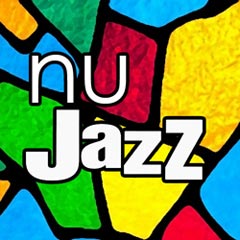Jazz
ON AIR - PROGRAMMING
The encounter between black and white music, an intense and concentrated explosion of musical improvisation, entrancing and free. For sophisticated ears, comfortably relaxing. Jazz is a complex fusion of blues and swing rhythms, intricate harmonies and intense improvisation. When you close your eyes to listen to a jazz piece, it feels like each musician is expressing an individual story or emotion that weaves together with the rest of the orchestra. Whether they're playing handwritten scores or taking their solo to new limits every time, jazz music brings a unique flavor that guarantees to put your soul in a groove! It's no wonder why some find solace in jazz: combining elements of healing mastery with artistic vigour creates an accessible music for everyone. The features that distinguish jazz style are improvisation, swing tempo, the poliritmia and use of blue notes.
Discovering the Magic of Jazz: A Fusion of Blues and Swing
Jazz is a genre that has captivated music lovers around the world for ages. From the encounter between black and white music, jazz emerged as an intense and concentrated explosion of musical improvisation, entrancing and free. Jazz is a complex fusion of blues and swing rhythms, intricate harmonies, and intense improvisation that weaves each musician's individual story or emotion into the orchestra's tapestry. It's the type of music that can make you lose yourself in a soothing, harmonious world, far away from the monotony of everyday life. In this blog post, we will explore the fascinating origins of jazz and delve into its unique features that distinguish it as a style like no other.
The origin of jazz can be traced back to the African-American communities in the Southern United States during the late 19th and early 20th centuries. The essence of jazz lies in its improvisation, which originated in the African musical tradition, where the performers would spontaneously integrate their personal improvisations into their performances. Jazz took this idea and developed it with the instrumentation of European classical music, like brass and reed instruments, creating a new style that incorporated all of the elements of the African-American experience, as well as other cultures around the world that had an influence on the genre.
The swing rhythm that defines jazz comes from the African concept of polyrhythm, which allowed for multiple rhythms to be played at the same time to create a unique, lively sound. With the emergence of swing jazz in the 1930s and 1940s, jazz took off as a genre of music that could make people dance and feel good. With swing as the backbone of the genre, jazz continued to grow in popularity across the globe, and the music world was never the same.
One of the distinctive elements of jazz that captivates listeners is the use of blue notes – notes that are intentionally flat and played just a little off-key. These notes create a unique dissonance that adds character to the music. The blue notes add a deeper emotional dimension to the music that takes the listener on a journey through the performer's interpretation and feelings.
Jazz is not only a genre that can be appreciated by sophisticated ears, but it is also music that offers a wide range of accessibility to everyone. The sleight-of-hand improvisations combined with artistic vigor create a type of music that anyone can relate to, regardless of their musical background or knowledge. Jazz's element of improvisation encourages creativity, allowing everyone to appreciate the artistry of the performer's creation in the moment.
To sum it up, jazz is a genre that stands out not only for the fusion of African and European elements of music but also for its ability to express emotions and tell stories through the sound. Jazz offers a unique musical experience that can bring a sense of healing and comfort, making it an accessible music choice for everyone. With its improvisations, swing, polyrhythm, and blue notes, jazz is an exciting genre that continues to influence music today. Listen to jazz, and you'll experience the magic that only this genre can deliver!
Discovering the Magic of Jazz: A Fusion of Blues and Swing
Jazz is a genre that has captivated music lovers around the world for ages. From the encounter between black and white music, jazz emerged as an intense and concentrated explosion of musical improvisation, entrancing and free. Jazz is a complex fusion of blues and swing rhythms, intricate harmonies, and intense improvisation that weaves each musician's individual story or emotion into the orchestra's tapestry. It's the type of music that can make you lose yourself in a soothing, harmonious world, far away from the monotony of everyday life. In this blog post, we will explore the fascinating origins of jazz and delve into its unique features that distinguish it as a style like no other.
The origin of jazz can be traced back to the African-American communities in the Southern United States during the late 19th and early 20th centuries. The essence of jazz lies in its improvisation, which originated in the African musical tradition, where the performers would spontaneously integrate their personal improvisations into their performances. Jazz took this idea and developed it with the instrumentation of European classical music, like brass and reed instruments, creating a new style that incorporated all of the elements of the African-American experience, as well as other cultures around the world that had an influence on the genre.
The swing rhythm that defines jazz comes from the African concept of polyrhythm, which allowed for multiple rhythms to be played at the same time to create a unique, lively sound. With the emergence of swing jazz in the 1930s and 1940s, jazz took off as a genre of music that could make people dance and feel good. With swing as the backbone of the genre, jazz continued to grow in popularity across the globe, and the music world was never the same.
One of the distinctive elements of jazz that captivates listeners is the use of blue notes – notes that are intentionally flat and played just a little off-key. These notes create a unique dissonance that adds character to the music. The blue notes add a deeper emotional dimension to the music that takes the listener on a journey through the performer's interpretation and feelings.
Jazz is not only a genre that can be appreciated by sophisticated ears, but it is also music that offers a wide range of accessibility to everyone. The sleight-of-hand improvisations combined with artistic vigor create a type of music that anyone can relate to, regardless of their musical background or knowledge. Jazz's element of improvisation encourages creativity, allowing everyone to appreciate the artistry of the performer's creation in the moment.
To sum it up, jazz is a genre that stands out not only for the fusion of African and European elements of music but also for its ability to express emotions and tell stories through the sound. Jazz offers a unique musical experience that can bring a sense of healing and comfort, making it an accessible music choice for everyone. With its improvisations, swing, polyrhythm, and blue notes, jazz is an exciting genre that continues to influence music today. Listen to jazz, and you'll experience the magic that only this genre can deliver!
Jazz features and brief history
The Jazz was born in African American communities in the Southern United States. The features that distinguish this style are improvisation, swing tempo , the poliaritmia and feeling melancholy determined by the use of blue notes. This genre that was born from a meeting of African and European music traditions , has over time further contaminated , evolving in a variety of styles and subgenres.
What are you thinking about?





